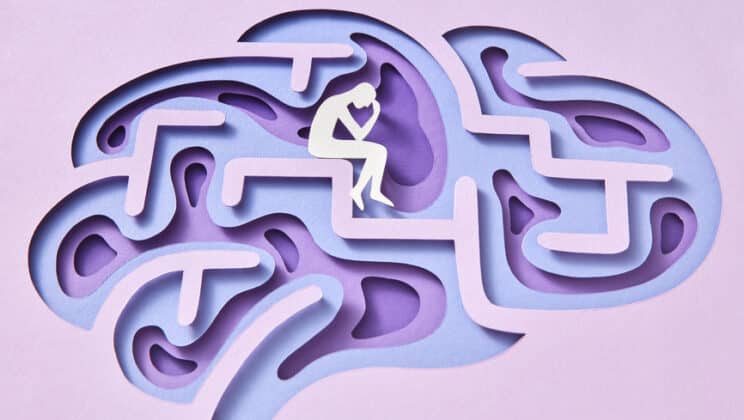Getting the Most Out of Exposure Therapy
July 13, 2018
I sat quietly while the client in front of me closed her eyes and recounted in vivid detail the sexual assault she had experienced many years before. The pain of the memory was evident on her face and in her voice. The details were shocking and sad, yet I felt truly honored to bear witness to her healing process. It was my first experience with prolonged exposure (PE) for PTSD.
I was excited to be practicing PE for the first time. Though many of my colleagues found it uncomfortable to ask a client to experience such distress, I’d been doing other forms of exposure therapy with most of my anxious clients for a few years and found it one of the most rewarding things I could do in my practice.
Exposure is a therapeutic procedure in which a client repeatedly approaches and contacts something they fear, whether a place, situation, thought, memory, or physical sensation. It’s one of the most powerful tools we have in mental health care. What seemed so scary to both my clients and me in the beginning – getting dirty on purpose in OCD, boldly embracing social interactions in social anxiety disorder, or intentionally self-inducing panic symptoms in panic disorder – quickly became empowering. Clients feel emboldened and enlivened as the situations they have desperately avoided lose the power to control their lives. And it’s a thrill to be part of it.
Exposure therapy for PTSD
PE involves first constructing a hierarchy of situations that the client fears approaching and beginning to approach them one by one. These situations usually have some association with the traumatic event, yet they’re no more dangerous than other everyday situations. Examples might include going out in public, being in crowds, talking to new people, walking near the area (if safe) where the traumatic event happened. This is called “in vivo” exposure.
The next part of the process involves describing the traumatic memory in great detail while being recorded, then listening to that recording in the session and as homework, repeatedly, until the memory begins to lose its power. This is called “imaginal” exposure.
Fear reduction – necessary or not?
Something funny happened that first time I practiced PE. We were doing the imaginal exposure part of the treatment, and the protocol called for the client to recount her traumatic memory repeatedly, hopefully until her subjective units of distress (SUDs) reduced by 50 percent. The ninety-minute session was nearly over, and her SUDs had hardly budged. She had started at 90 on a 100-point scale, and we were down to about 80. Something similar happened every time she practiced exposures, whether imaginal or in vivo, over the course of therapy.
Yet I wasn’t really worried. I was armed with a key piece of information from the science of exposure therapy. UCLA researcher, Michelle Craske, and her colleagues had recently published a review that observed that fear reduction in exposure does not predict outcome. In other words, you don’t have to feel less scared or distressed to get the desired benefit of exposure. The PE protocol, published prior this review, didn’t incorporate that knowledge, though it didn’t completely rule out the possibility of improvement with limited reductions in SUDs.
Wanting to be the best scientist-practitioner I could be, I prepped the client during the education phase of the treatment by saying that though we would look for her SUDs to go down, new research suggested she would improve even if they didn’t. So when those numbers barely budged week after week, we just observed it, and made note.
Something did change in a big way, however. Despite her intense discomfort, she told me she could feel the experience shifting, becoming less powerful, less all-encompassing. The memory began to have less impact, even if she still felt lots of distress. Her PTSD symptoms began to diminish, and when we conducted an assessment using a standardized measure of PTSD symptoms at the end of about 12 weeks, she was in the subclinical range.
What’s going on in exposure therapy?
Historically, researchers and practitioners assumed that what made exposure work was the habituation that usually occurred. This makes sense: in most situations, the more time we spend with something uncomfortable, the less uncomfortable it makes us. In other words, we become habituated to it.
However, the evolving science of exposure, including the data that shows fear reduction doesn’t predict outcome, suggests that what is more essential to the process is something called inhibitory learning, in which the fear-inducing stimulus begins to also be associated with safety instead of danger. The association with danger doesn’t necessarily go away, but it now competes with the safety association. And the stronger the safety association becomes, the more it inhibits the influence of the danger association.
How did this work with my client? Over time, situations and memories that once evoked typical PTSD symptoms – fear, hypervigilance, and an urge to escape – gradually began to evoke other responses, such as a sense of renewed safety, a feeling that the traumatic event was in the past, and a feeling of compassion towards herself and others who had experienced similar traumas. The fear response didn’t completely go away, but she now experienced it in the context of other, more helpful responses.
Maximizing the Impact of Exposure Therapy
This evolving science is reviewed by Michelle Craske and her colleagues here, along with ways we can make exposure as effective as possible. I’ve summarized some of it below with the help of brief catchphrases I recently encountered in a chapter on exposure by Carolyn Davies and Craske in a new book called Process-Based CBT, which is part of an effort to direct the field of cognitive behavioral therapy away from focusing inordinately on techniques and towards processes of change. If you’re new to exposure therapy, I suggest you take these suggestions, which probably fit best in later stages of therapy, lightly. It’s still important to maintain the client’s buy-in by starting small and giving them opportunities to succeed early on.
Expectancy violation (“test it out”)
If inhibitory learning is behind the effectiveness of exposure, then the more your client encounters learning experiences that violate his or her expectations, the better. Structure your exposures for maximum expectancy violation. You could encourage your client with panic attacks to do multiple hyperventilation trials, far more than seems “safe,” in order to discover that one can hyperventilate for long periods of time, even more than 30 minutes, with no adverse consequences. You could encourage your client with OCD to get as dirty as possible or even eat a piece of candy off a toilet seat to really show that life doesn’t fall apart when you expose yourself to potential contaminants.
Deepened extinction (“combine it”)
Combine exposure modalities. For example, have your client with PTSD work up to purposely hyperventilating while doing in vivo exposure in crowds. Or encourage your client with social anxiety to imagine the worst-case scenario happening (i.e., perform imaginal exposure) at the same time he or she interacts with people in a fully engaged way in a social setting.
Occasional reinforced extinction (“face your fear”)
Many therapists (myself included) practice exposure hoping that their client only has positive experiences. We certainly don’t want clients with social phobia to have a truly embarrassing moment in a social situation. But this might actually provide additional benefit. Because embarrassment, rejection, and other feared but ultimately safe outcomes are a part of life, your client, with your support, can discover that these experiences are survivable – and can even be a source of growth.
Removal of safety signals (“throw it out”)
It’s tempting not to discourage your clients from holding on to some safety signals – having a safe person nearby, carrying hand sanitizer, carrying a beta-blocker or benzodiazepine “just in case.” However, when clients continue using safety signals, they continue to give themselves the message that without their magical assistance they’re not capable of handling anxiety (or the situations that evoke it). This is contrary to the new learning that we hope they’ll gain.
Affect labeling (“talk it out”)
In a well-constructed study with four comparison groups, subjects went through an extensive spider phobia protocol. Those who distracted themselves, reappraised their thoughts (e.g., “I can handle this; this isn’t so bad.”), or completed exposure without doing anything additional, performed less well than those who simply named their feelings as they were arising (e.g., “I’m feeling really anxious in the presence of this ugly spider.”) Presumably, this brought them closer to the experience itself, allowing them to be fully present to benefit. So the next time you’re helping a client go through exposure, encourage them to mindfully track their experience as it arises: “I’m noticing my heart begin to race. My hands are getting clammy.”
Variability (“vary it up”)
When habituation was considered the primary mechanism driving exposure, it made sense to create a hierarchy and go up the hierarchy from least to most distressing. As you habituate to one level of distress, it seems logical that you’re better prepared to move on to the next level of distress. But new research suggests that you get more traction jumping around the hierarchy a bit. So don’t be reluctant to encourage your clients to play around with the order of exposures. You may have already noticed this in your practice: sometimes clients suddenly become eager to try something higher up the ladder than you had anticipated. Go with their willingness.
A final note: be bold
Exposure therapy can be hard for the therapist to do. A recent study suggests that therapists who score high in experiential avoidance, the tendency to try to suppress or minimize uncomfortable thoughts and avoid the situations that evoke them, may spend less time on exposure with clients who need it. Think of conducting exposure with your clients as your own inhibitory learning experience. The more you do it willingly, in multiple contexts, with multiple people, the more the experience will seem safe – and perhaps even exciting, as it is for me – and the more you’ll see how it can transform the lives of your clients.
CONTACT US
If you need support, Lyra can connect you to a behavioral health solution. You can get started today if Lyra is offered by your employer. Sign up now.
And check in frequently here or follow us on Facebook, LinkedIn, and Twitter for more insights into optimal well-being.
DISCLAIMER: The content of this blog is not intended to be a substitute for professional medical advice, diagnosis, or treatment.
Author
Matthew Boone, LCSW
Matthew is a nationally recognized trainer in acceptance and commitment therapy and the editor of the book Mindfulness and Acceptance in Social Work.
Explore additional blogs

Mental health treatment
Responsible Mental Health Benefits Providers Embrace Human-Centered AI

Mental health treatment
Therapist POV: Lyra’s Alcohol and Substance Use Care Innovations

Mental health conditions